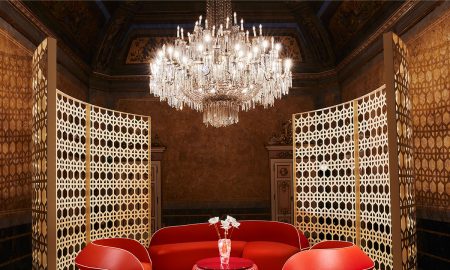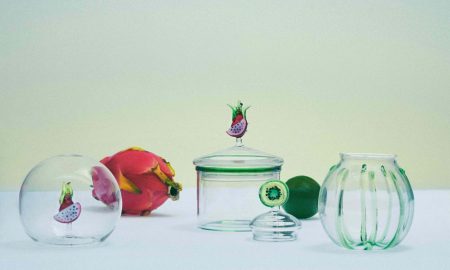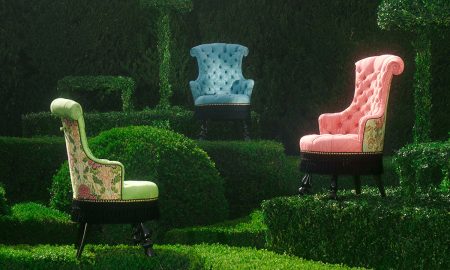Human Topography
“Once you send your work out into the world, it loses the personal context it was created in,” says Itamar Jobani, an emerging Israeli artist currently showing at the Andrea Meislin Gallery in New York. “I create work within my own personal context, but with the intention of creating an image that will exceed my own subjectivities.” Whether the spectator picks up on subtle references to Itamar’s upbringing in a climate dominated by territorial conflicts or the artist’s commentary on our aggressive relationship with the planet, Jobani’s plywood/cardboard installations make huge impressions. “Jobani’s sculptures demand your attention and wherever we have exhibited them, people have overwhelmingly been excited by them,” says Meislin. Ranging from small to gigantic (the biggest measures 25 feet in height), Jobani’s characters are made in a topographical, layered fashion. “The technique most often used in architecture and in describing land, I use to describe a human, a hybrid of man and land,” he adds. This dynamic allows Jobani to view earth as man and man as earth, which, in the artist’s perspective, has been wounded and is bleeding.
“No doubt, conflict has shaped me as an artist,” admits the 30-year-old, who grew up in a Jewish Orthodox home outside of Tel Aviv. “Terrorist attacks were a constant presence in our lives. Today, I still carry it with me.” Arguably, the fragility of life he saw firsthand permits Jobani to appreciate being heralded as one of the most promising artists coming out of Israel today. “I feel so lucky to be able to support myself from my art. I wake up early, go to my studio and work until it is time to go to sleep.” Such determination is paying off. He is currently putting finishing touches on an exhibit of embossed wood reliefs that will open the prestigious Vierter Stock gallery in Berlin this September. “We are very excited to host this exhibition, as we believe it will be one of the most important exhibitions in sculpture in Berlin this autumn,” concludes Creixell Espilla-Gilart, the gallery director.
Pursuit of Happiness
Few embody the spirit of adventure like Walter Zumo. A nomad born in Venezuela, raised in Florida, shaped by New York City’s infectious energy, and artistically realized in the Hamptons’ Montauk, this new, unrepresented artist led many lives before finally succumbing to his calling. “The birth of my son and a mid-life reevaluation made me realize that I wanted nothing short of happiness in my life,” says the painter. And judging by the buzz generated by noteworthy collectors out on the East End, leaving the comforts of the corporate America experience behind may have well launched an artistic career of huge proportions.
Today, his happiness comes from a mixture of surfing, hanging with his 7-month-old boy, and dedicating himself totally and absolutely to his art. His latest series, Of Flesh, features portraiture based on images of women pulled from amateur porn sites. “I tried to capture the moment of pleasure without the graphic element,” Zumo explains. “Because there is no obvious references to pornography, this series, through implication, plays on our voyeuristic psyche.” His central figures are alarmingly present. There is an odd tension generated by their inactivity, cleverly manipulating the viewers to draw their own conclusions. A self-professed lover of entertainment, Zumo does not shy away from what makes us uncomfortable. His previous series, Of Idols, Icons and Worship, focused on prominent figures in the American lexicon of pop culture. “It’s fascinating to me how we as a culture embrace people like Paris Hilton or Oprah and ordain them as iconic figures. I’m not here to judge that, but I want to make you see it.”























